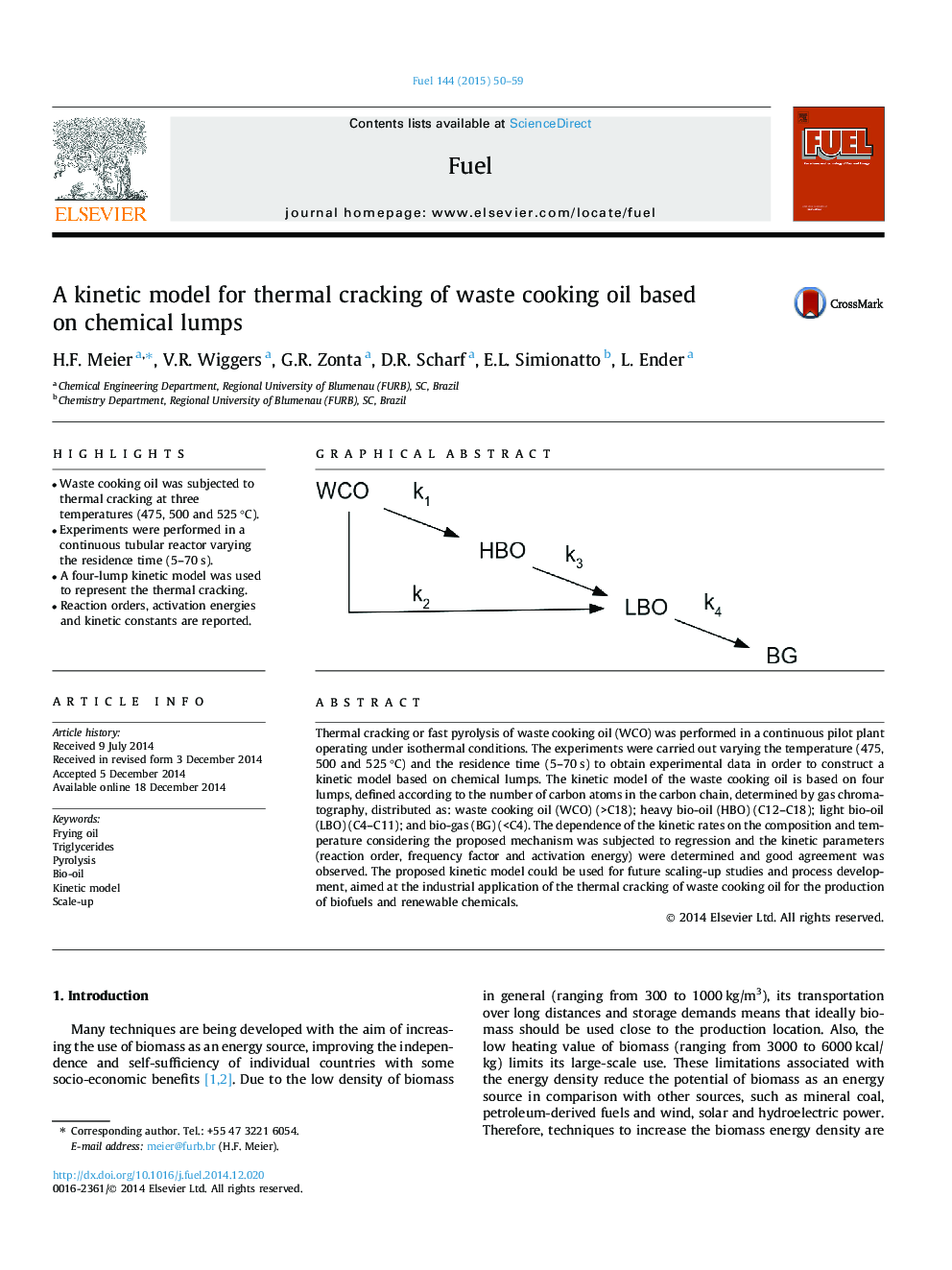| Article ID | Journal | Published Year | Pages | File Type |
|---|---|---|---|---|
| 205826 | Fuel | 2015 | 10 Pages |
•Waste cooking oil was subjected to thermal cracking at three temperatures (475, 500 and 525 °C).•Experiments were performed in a continuous tubular reactor varying the residence time (5–70 s).•A four-lump kinetic model was used to represent the thermal cracking.•Reaction orders, activation energies and kinetic constants are reported.
Thermal cracking or fast pyrolysis of waste cooking oil (WCO) was performed in a continuous pilot plant operating under isothermal conditions. The experiments were carried out varying the temperature (475, 500 and 525 °C) and the residence time (5–70 s) to obtain experimental data in order to construct a kinetic model based on chemical lumps. The kinetic model of the waste cooking oil is based on four lumps, defined according to the number of carbon atoms in the carbon chain, determined by gas chromatography, distributed as: waste cooking oil (WCO) (>C18); heavy bio-oil (HBO) (C12–C18); light bio-oil (LBO) (C4–C11); and bio-gas (BG) ( Graphical abstractFigure optionsDownload full-size imageDownload as PowerPoint slide
